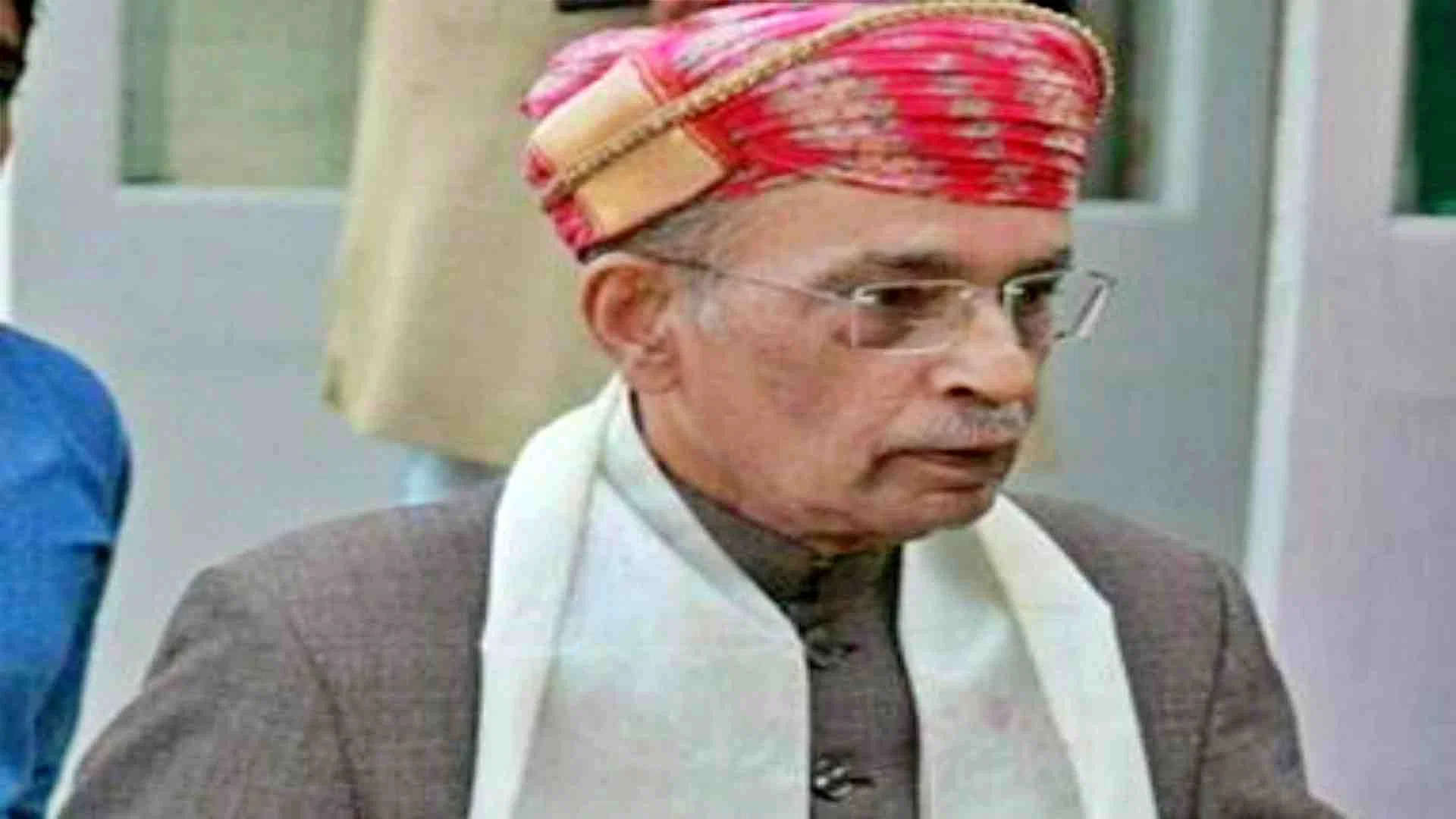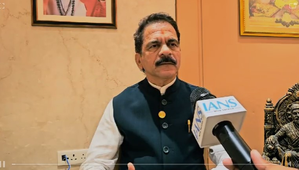Udaipur : Every Indian has grown up with tales of the valour of Maharana Pratap Singh who preferred to take on the full might of Akbar’s army rather than succumb to the dictates of the mighty Mughals. A visit to Udaipur’s City Palace, built by his father Udai Singh II, is a journey into the land of heroes and the architecture of impenetrable fortress-like palaces, nestled amidst the rugged Aravalli Hills. Strategic defence became the main driving force shaping these citadels and their configuration on hill peaks.
Curved arched window overlooking Pichola Lake. Rajnish Vats
The original capital of the Mewar kingdom was Chittorgarh, but by the time Maharana Udai Singh II ascended the throne in 1537, there had been so much conflict with Mughal forces that the Maharana decided to build a new, safer capital. Any architect-planner of today would be amazed at the clever site selection made by the Maharana, who chose the present site near Pichola Lake for his new capital, as the topography of this place was well protected on all sides by forests, lakes and the Aravalli Hills. Historically, cities have settled along rivers for natural water supply, trade routes for the development of the economy and convenient locations for strategic defense. Udaipur met all the above criteria.
The fort-palace is situated on top of a fish-shaped hill, with a waterfall on one side that ensures safety from looters, while enabling a wide view of the shimmering waters of Pichola Lake. Even today, Udaipur has an intangible timelessness about it. The City Palace stands tall on the city skyline, a symbol of royal blessings to its subjects. Encircling the hill slopes with stone embankments, the palace resembles a massive citadel perched atop the ridge. Built from locally available marble, limestone and granite, the superstructure is painted in lime plaster that casts shimmering reflections in the lake waters below on the western side, and rises above the city’s majestic coast on the eastern side.
Built in stages over 400 years by 23 generations of rulers, the palace is a complex of numerous courtyards, squares, gateways, arches and narrow winding staircases connecting the various levels for protection, so as to thwart sudden enemy attacks. The palace façade is 801 feet long and 100 feet high, and around the courtyards are 11 smaller palaces, each of which plays a different and well-specified role in the functioning of palace life. Broadly, the City Palace is divided into two distinct areas: the Mardana and the Zenana palaces.
Chinni Chitrashaala made of Chinese and Dutch mosaic tiles.
In contrast to the grand palace’s size, the interiors have balconies, minarets and domes displaying “delicate mirror work, marble work, murals, wall paintings, silver work, inlay work and coloured glass remnants”, explains conservation historian Shikha Jain. At several points, a visitor can peek out of a latticed window for a breathtaking view of the lake and the city spread out below it. The major complexes and palaces are Rai Angan, for royal coronations
the first
courtyard; the 17th century Chandran Mahal; Suraj Gokhara or public address façade; Mor Chowk; Dilkhush Mahal; Surya Chaupad; Sheesh Mahal; Bhim Vilas and Amar Vilas. Fateh Prakash Palace and Shiv Niwas Palace
Manak Chowk promenade.
The Bawdi Mahal, also known as the Garden Palace, is the central palace perched on the 89-foot-high natural rock of the site. Every tourist guide will be in his most excited nature here, astonishing the tourists with the wonders of art and architecture. A pool with a babbling fountain in the centre, powered by engineering equipment to pump water from below, was used for Holi celebrations. Adjacent pavilions are decorated with stained glass pillars around a cusp arch, offering breathtaking views of the city spread out below.
As you move forward, the most dazzling part is the royal bedroom called the “Kanchi ki Burj” which has mosaics of mirrors adorning the walls. There is a repeated presence of sun-face symbols in gleaming brass throughout the palace. The largest of these symbols can be seen on the wall of Surya Chopad, a reception centre on the lower level.
Sun symbol in brass.
Passing through narrow corridors, you reach a brightly lit enclosure called the Mor Chowk or Peacock Square. The entire facade on one side of the courtyard has “three peacocks (representing the three seasons of summer, winter and monsoon), created in high relief, and fronted by coloured glass mosaics, created in successive niches in the wall area or jharokhas”. Built during the reign of Maharana Sajjan Singh, the peacocks were crafted from innumerable pieces of glass that shine in green, gold and blue. This was the enclosure where the treaty between Maharana Bhim Singh and Captain James Todd of the East India Company was signed in 1818. You also pass through the Badi Chitrashali, a square courtyard built during the reign of Maharana Sangram Singh (1710-1734). The eastern side is called the Chini Chitrashali because Chinese and Dutch tiles were added to it in the 19th century.
Mural on the wall of the City Palace Court.
The largest public square in the entire complex is the spacious promenade called Manak Chowk. It is a complex for formal audiences for the Mewar rulers, and is still used extensively today during traditional festivals, with the participation of the royal family along with the locals, making the City Palace a living heritage symbol. When you step out of the palace and visit the city bazaars, you find many traditional arts alive and visible – whether it is the murals of horses and elephants on the facades of buildings, or miniature paintings by artists dipped in vegetable dyes and colours made from minerals with fine brushes made from squirrel tails.


